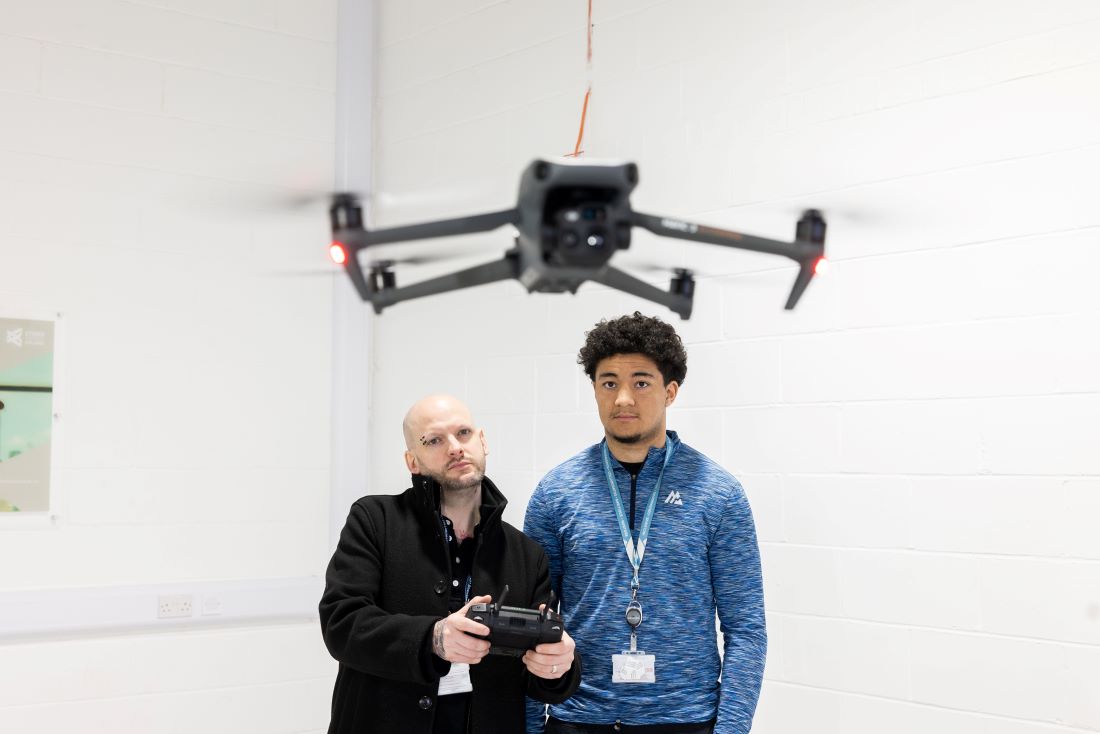State of the Union: Employability, further education, and the skills gap in the UK and US

For almost a decade, our business has operated in the Executive Search and Recruitment markets in the UK, mainly in the professional services industry. This way, we see first-hand how entry into these roles relies far more on inherited knowledge and opportunity than it does on individual potential. Structural changes are necessary—radical changes to our attitudes and infrastructure that have limited young people from reaching industries in which they are severely underrepresented.
Now, as our operations break into the US, we’re compelled to consider how it’s similar and different to the UK, and how we might approach the issue of equal opportunity there. Knowing what we do about the UK, having worked both in the private sector and as a corporate foundation, we look here at young people’s standing in the US, how socioeconomic disadvantage impacts both markets, and where core differences lie.
Access to Education
On a fundamental level, the two markets are extremely similar. One concept makes one appearance after another whenever we investigate employability, especially among young people: inherited knowledge and opportunities. Access to certain industries is still limited by—at least—a bachelor-level degree at traditionally defined ‘top tier’ universities: Ivies in the US and Russell Group institutions in the UK. Without the means to enter this kind of formal education, regardless of dedication to academics or hard work through mandatory school, it is far more difficult for young people to realistically acquire employable experience or skills.
For instance, most corporate roles, both in the UK and the US: about such specialised jobs that “tends to involve research, scientific, or professional work,” the USAJOBS website itself says “to qualify, you must have completed all college or graduate level courses at an accredited (or with pre-accredited status) college recognized by the Secretary of the U.S. Department of Education.” In the UK market, some of the Big 4 have improved their recruitment processes significantly in the past decade to combat this issue—either hiding education information from recruiters until the end of an interview process or “removing the requirement for a minimum degree classification for graduates” altogether—which is a sign that, finally, the industry is willing to take leaps forward, and away from university degree requirements, though some areas of professional services (accounting, assurance, and law, among others) still call for specific studies.
There are, of course, alternatives to the most expensive and—though the concept is archaic—prestigious higher education, but they don’t come without strings. In the UK, there is still a stigma surrounding non-university education, A-level-equivalent qualifications, and apprenticeships, as well as a chronic lack of support for teachers in these environments, leading to a never-ending vicious cycle. One Guardian article cites Paul Johnson, IFS Director, as saying, about current government officials: “these courses are unknown to them or their children.
Heads of FE colleges have none of the power of vice chancellors, everything is stacked against them.” This means as much about the funding difference between university education and other forms of training for school leavers as it does about the chasm between the two worlds and the differences in attitudes towards the two; students complete one kind of education, or the other; young people are either very far behind on their education because of COVID-19 and in need of support they won’t receive, or very far ahead, with the resources to be self-reliant; employers are either open to supporting young people through apprenticeships or accept non-university training, or they still place a high premium on bachelor’s degrees from ‘reputable’ institutions.
The same can be said for the US and the different attitudes to four-year universities and two-year degrees at community colleges. The latter are far more accessible to young people from disadvantaged or underrepresented backgrounds: lower costs, shorter time frames to complete qualifications, and less strict admission requirements. But there’s a reason why so many people transition to a four-year university after such a degree, and consider community colleges as entry points to something, similarly to the UK, more ‘prestigious’, with better exit opportunities. 2021 SENSE (Survey of Entering Student Engagement) results show that “78% of entering students […] indicated transferring to a four-year college or university as a goal.”
The percentage of students who do transfer and end up earning a bachelor’s is a different story, but what we see here is a strong stigma against community colleges as a destination for education before transitioning to the world of work. In an environment of school pride, competitive and historic college sports, and constant comparison of personal achievements, prejudice drives people away from what would otherwise be an advantageous education option. This happens even when statistics show employability after community college to be on the rise, with the caveat that, for what qualifies as ‘specialised’ work, there is little sign that four-year degree requirements will be scrapped, or even eased, any time soon.
The Skills Gap
Employability in both markets also suffers from a digital skills problem. We’ve written about this issue in the UK before in 2020, at the height of COVID-19 fallout: “[…] approximately 13.6 million workers in the UK aged 15+ don’t have the essential digital skills required for work, [which is] 25% of the total population aged 15+ and a staggering 42% of the workforce.” In the US, a recently released Deloitte report tackles the Great Resignation and most likely disruptors of business strategy within the next 10 months: “While labour/skills shortage has been unseated from its previous top position [by inflation], it remains a top disruptor for over half (59%) of CEOs.”
This is indicative of a global situation. A 2022 Salesforce survey states that “over three-quarters of respondents do not feel ready to operate in a digital-first world, but only 28% are actively involved in digital skills learning and training” and “there is a major gap emerging between everyday digital skills and those needed for work, especially among younger workers.” The obvious solution for this shortage of skilled (usually young) people who could ease these concerns would be more and better education, either through university or alternative training. However, in the US, “according to the National Student Clearinghouse Research Centre, undergraduate enrolment is down by 9.4 percent from pre-pandemic levels, with the largest decline in community college enrolment.” There are a few possible explanations for this, but given current inflation trends, it is not difficult to imagine that fewer people are choosing further education over going straight into the world of work, relinquishing the opportunity for continued training and development.
It also bears mentioning that even when young people can pursue a university degree, the work doesn’t stop there: increasingly, corporates that require those qualifications also require an unprecedented amount of extracurriculars, as well as skills that ought to be pursued outside of a degree: digital literacy, public speaking, conflict resolution, problem solving, et al.
This brings us right back to the conversation about access. A lack of training in key skills for the future of work seems to be a problem across the board—in universities, FE, community colleges, et al—but limited access to more expensive and well-connected institutions exacerbates the problem for young people from disadvantaged backgrounds. That disadvantage may look different in the UK and the US but the core barriers for the future workforce are, in essence, the same. Improving employability will almost always require better, more tailored education, at which point the question comes into play: how do we provide young people with that education at the lowest possible individual cost?
What Next?
The good news is that both UK and US governments have started to notice where the problem is and how it can be helped: through COVID-19 recovery programs, both have prioritised education and upskilling, at least in name. Build Back Better, spearheaded by the Biden Administration, aims to improve primary schooling and school infrastructure, though its initiatives and funding could go further still. Similarly, the American Rescue Plan provides even more structured funding in all directions when it comes to education: elementary and secondary school support, more teacher support and education, and mental health initiatives that are notoriously difficult to implement effectively in schools.
Similarly for the UK, the Levelling Up White Paper and associated initiatives have attempted to tackle access to higher education, FE infrastructure, and the skills gaps on all counts (digital and otherwise). We’ve written at length about what this means for young people’s future—and, generally, the future of work in the UK—but the long story short is that, while these plans are a step in the right direction, they should only act as a foundation on which each government must continue to build.
If there’s anything we’ve learned from our UK vs. US analysis, it’s that our issues with employability, especially in the case of young people from disadvantaged backgrounds, are eerily similar. Though our infrastructure differs, and allocation of government funds should reflect complex circumstances in different regions within the two countries, a mixture of limited access to opportunity and the (digital) skills gap makes it difficult for young people to engage with and be admitted into certain industries the same way in both cases.
That is, of course, unless we continue to invest in education; continue to improve infrastructure regionally, spearhead FE initiatives, whatever they might look like, remove stigma surrounding them, and correctly identify what skills young people will need in the future world of work. Regardless of specifics, this should be—both American and British—priority number one.
By James O’Dowd, Founder of the Patrick Morgan Foundation & Marina Hercka, Senior Associate, Patrick Morgan











Responses